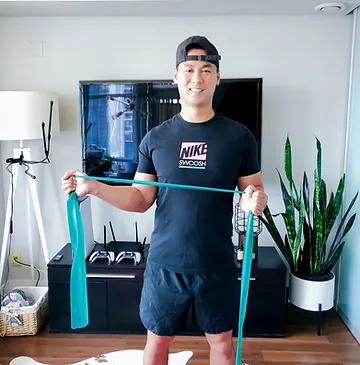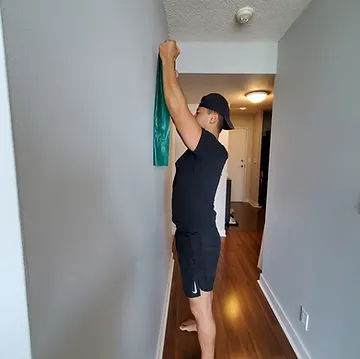Shoulder impingement is mainly the result of a prolonged cycle of your rotator cuff rubbing between your humerus and the acromion which is the top outer edge of your shoulder blade. This excessive rubbing leads to swelling and pain. Shoulder impingement can be easily diagnosed by a physical exam from a physiotherapist. Let’s take a look at what exactly is shoulder impingement syndrome.

What is it?
The rotator cuff tendons attach along the top of your arm bone called the humerus. Above the rotator cuff tendons is the acromion which is the outer edge of the shoulder blade. The rotator cuff tendons can be sandwiched between the humerus and the acromion and this constant friction will cause shoulder pain. This friction can be caused from a muscle imbalance in the shoulder where certain shoulder muscles are tight and others are weak.
This is one of the most common shoulder injuries leading to pain with overhead activities. For most people this means pain with taking off a shirt, putting on a jacket, overhead reaching, reaching behind your back.
What are the signs and symptoms?
Symptoms of shoulder impingement syndrome include:
-
Shoulder/arm weakness or stiffness
-
Pain when lying on the affected side
-
Pain when arms are above your head
-
Pain when lifting or raising your arm
-
Pain when reaching behind your back
-
Shoulder achiness especially at night
How is it treated?
Muscle tightness around the shoulder usually pull the shoulder into a forward position. This leads to impingement of the rotator cuff muscles. The tight muscles usually responsible for this is the pectoralis minor and latissimus dorsi muscles. Your physiotherapist may use a technique called active release to stretch these muscles. Active release is used to massage and stretch tight muscles. Acupuncture can also be particularly effective at releasing muscle tension and shoulder pain. After a treatment with active release, massage, stretching, and acupuncture you should notice that you can move your shoulder more freely with less pain.
Common Home Exercises:
Shoulder scaption with band:
Use a band or a water bottle for resistance for this exercise. Keep your elbow straight and lift your arm up at a 45 degree angle in front of you. Lift your arm up to shoulder height and lower your arm down slowly. Perform 8-15 reps x 3 sets.

Shoulder external rotation:
Hold onto a resistance band. Keep both elbows bent to 90 degrees. Turn one hand outwards and feel for a muscle contraction along the back of the shoulder. Perform 8-15 reps x 3 sets.

Isometric external rotation wall slide:
Pull a band apart so both hands are about shoulder width apart. Move your arms slowly up and down while maintaining tension on the band. You can do this exercise in front of a wall by sliding your hands up and down the wall.


